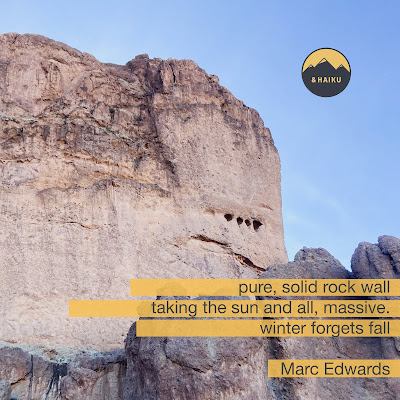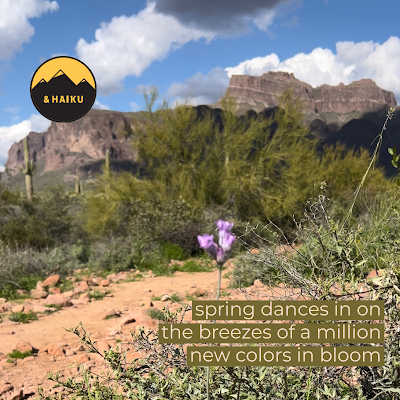Haibun: Artificial Intelligence Part 1
(As orange leaves on a birch tree is a sign of autumn, so is AI writing readable prose. With the algorithms of ai-writer dot com, I put in “Amongst the pines, a birch tree’s leaves turn orange in the fall” and the prose below was 100% written by Artificial Intelligence. Of course the haiku was written by me. Enjoy!)
The turning of leaves in autumn is one of the most spectacular natural spectacles, from glowing gold tones to burning oranges to reds and yellows, it is absolutely breathtaking, especially when it comes to autumn, when the twisted pines begin to show their true colours. Late autumn is the best time to enjoy, a time full of colours, light and shade and a perfect time for birds of prey.
The leaves usually begin to brown and turn reddish-violet in spring, then dark green, bright yellow and orange in autumn. In autumn the leaves can turn a pale golden yellow, but the autumn colour is minimal and often a dull brownish yellow.
In some trees, the other way to identify the tree is when the leaves fall long before they point to the winter buds. There are no visible symptoms of scorching until they have gone away, but it is important to collect and remove leaves that have fallen to the ground, as leaf spot fungi can cause leaf spots to form again - infecting a tree that then infects it the following spring. The tree should be sprayed before leaves emerge from it, and again after they are fully developed.
The white flowers of spring give way to small berries that mature to a deep red and remain on the tree until late autumn. Beech, black signs and maple trees yellow, red and purple in October and November you can see the first signs of orange, yellow and even red berries on some trees. Betula species such as betula, blackberry, birch, beech, oak and maple are among the best examples of autumn leaves.
The largest North American birch, also called yellow birch, is also called white birch, red birch or blue birch.
These trees are considered the purest autumn colour of all native trees and also bear the winter green compound. The only conifers that take on this colour are tamarack, which turns orange in autumn, and many other tree species such as oak, pine and birch. Another tree that takes on color in autumn is the quaking asp, which comes from the western USA and Canada. This tree is one of only a handful of native trees in North America with the orange color, but not the only one.
The birch belongs to the genus Betula, which consists of about 50 species of trees and shrubs. It belongs to the genus Betula, which is related to beech and oak trees, and is one of only a handful of native trees in North America of this color.
This is a low-lying area in the northern boreal forest of the Great Lakes region of North America. The area is also home to red and white pines, but the more northern reaches of this forest are dominated by trembling aspens, a native pine species, as well as a few other species.
The evergreen plants at the top are gradually mixed with rowan, creating bright flame blossoms - coloured berries that survive winter and turn green in autumn, with a spectrum of yellows and oranges. The yellow birch, American beech and maple all show autumn tones, the sugar maple is beautifully yellow-orange and the yellow beech corner changes to gold, which shows good colour at higher altitudes. In the lower layers, birch trees provide an excellent colour, while the contrasting mixed oak trees are only just changing.
Note: For more information about the colors of the leaves in the lower layers, please see the color changes at the bottom of this post.
The changing leaves of aspen, maple and birch will provide a colourful backdrop as we head south from Ely.
Normally we catch oranges, red maples and yellow birches in the third week of September or at the end of this week. The trees lose their leaves at the end of September and the beginning of October, when the colours migrate through the trees and extend the autumn colouring season into November. Look for more color in the lower layers, where they are common and should occur within 7 - 10 days.
The birch in the rose garden turns orange, as do the bright red Japanese maples in our garden and a few other trees.
The leaves are often semi-blue, many remain on the tree throughout the winter, but hybrids, often referred to as Waveyleaf Oak or Quercus X undulata, typically have flat leaf tips. Although there are no coniferous or cherry leaves, the very early yellow birches begin to change in spring, as do many other trees. Coos County forester Brendan Prusik says the miners attack the birch trees, turning their leaves brown in the fall. Aspen leaves, which are completely flat, were the subject of a study by the Oregon Department of Natural Resources' Aspen Quaking Leaves Research Program.
One of the most convenient places to observe the yellow birch and compare the trees is the Barnum stream path. The turkey trail takes you one mile to Pine Creek Gorge, which is particularly stunning in autumn when the hardwood trees turn yellow, orange, red and purple.
fire orange design, the sign
for autumn’s just fine
Sources:
[0]: https://odonals.com/nursery/the-trees-of-odonals/
[1]: https://wimastergardener.org/article/river-birch-betula-nigra/
[2]: https://www.smokiesinformation.org/fall-color-reports
[3]: https://www.nhmagazine.com/birches-learn-about-new-hampshires-state-tree/
[4]: https://www.missouribotanicalgarden.org/gardens-gardening/your-garden/help-for-the-home-gardener/advice-tips-resources/visual-guides/native-trees-for-missouri.aspx
[5]: https://www.dnr.state.mn.us/state_forests/fall-color-routes.html
[6]: https://www.adirondackvic.org/Trees-of-the-Adirondacks-Yellow-Birch-Betula-alleghaniensis.html
[7]: https://www.clickondetroit.com/all-about-michigan/2019/07/22/how-to-identify-the-most-common-trees-in-michigan/
[8]: https://wildadirondacks.org/trees-of-the-adirondacks-yellow-birch-betula-alleghaniensis.html
[9]: https://www.nytimes.com/2020/10/02/travel/leaf-peeping-drives-hikes.html
[10]: https://www.pennlive.com/life/2020/10/fall-foliage-is-coming-on-brilliant-but-fast-state-report.html
[11]: https://www.nps.gov/brca/learn/nature/quakingaspen.htm
[12]: https://www.bishopvisitor.com/activities/fall-colors/
[13]: https://tlcgarden.com/trees-for-oklahoma/
[14]: https://www.treehelp.com/about-tree-diseases/
[15]: https://sciencing.com/birch-tree-identification-6069758.html
[16]: https://www.thespruce.com/river-birch-trees-2130841
[17]: https://peecnature.org/learn/nature-guides/tree-guide/
[18]: https://homeguides.sfgate.com/treatment-orange-rust-tree-bark-65668.html
[19]: https://www.afar.com/magazine/best-places-in-united-states-to-see-fall-foliage
[20]: http://apartmentsinheightshouston.com/best-fall-foliage-trips-in-the-u-s/
[21]: https://wncmagazine.com/feature/peak_expression
[22]: https://www.lakesuperior.com/travel/ontario/344drivesON/
[23]: https://www.latimes.com/travel/story/2020-10-09/fall-colors-southern-california










